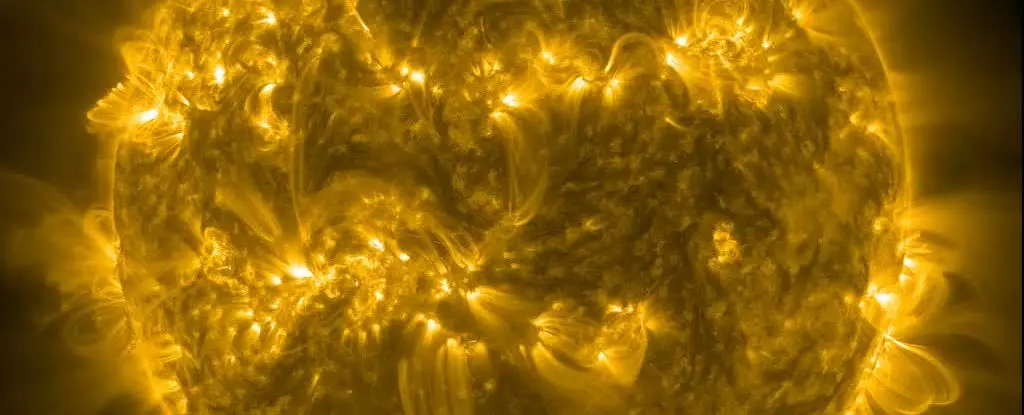The Sun, often regarded as the mighty force that sustains life on Earth, has a heartbeat that follows a unique rhythm characterized by various periodicities. Scientists have long been puzzled by the underlying factors that drive these solar heartbeats. However, recent research has reignited the discussion on a possible link between the Sun’s activity cycle and the gravitational forces exerted by planets in our Solar System.
A team of researchers led by physicist Frank Stefani from the Helmholtz-Zentrum Dresden-Rossendorf lab in Germany has proposed a controversial planetary hypothesis. According to this hypothesis, the Sun’s 11-year Schwabe cycle, which marks the oscillation between solar minimum and maximum activity levels, may be influenced by the gravitational interactions between the Sun and the planets Venus, Earth, and Jupiter.
Stefani compares the Sun’s activity to a gigantic dynamo that generates its own activity cycle. However, the planets’ gravitational influence intervenes in this dynamo, giving it periodic nudges that result in the stable 11.07-year rhythm observed in the Sun’s behavior. This synchronization between the planets’ alignment and the solar cycles suggests a deeper connection between celestial bodies.
Recent findings have identified giant vortical waves in the Sun known as Rossby waves, similar to those observed in Earth’s atmosphere, as potential drivers of the Sun’s activity cycles. Stefani’s team has proposed that these Rossby waves play a crucial role in transferring energy to synchronize the solar dynamo with the planetary alignments, thus explaining not only the Schwabe cycles but also the shorter Rieger cycles in solar flare activity.
The alignment of Venus, Earth, and Jupiter every 11.07 years coincides with solar cycles, activating Rossby waves and influencing the Sun’s behavior. Moreover, any two of these planets aligning have been shown to have enough gravitational force to trigger Rossby waves, aligning with the Rieger cycles. Mathematical modeling has supported these findings, further solidifying the potential link between planetary alignments and solar activity.
Researchers have also identified a Suess-de Vries cycle occurring every 193 years, attributed to the alignment of the Sun’s 19.86-year motion around the Solar System’s center of gravity with the Hale cycle. This additional cycle, corroborated by mathematical models, underscores the intricate relationship between planetary movements and solar variability.
While the planetary hypothesis offers intriguing insights into the Sun’s activity cycles, it is essential to acknowledge the complexities of solar dynamics. The sheer size and complexity of the Sun suggest that planetary influences, if real, are only a small piece of the puzzle. Nonetheless, the uncanny coincidences between planetary alignments and solar cycles warrant further exploration and data collection to validate these findings.
Stefani acknowledges that conclusive evidence for planetary influences on solar activity may require more extensive data and analysis. Models, while informative, are imperfect representations of reality and subject to revision based on new discoveries. The ongoing research serves as a reminder of the vast mysteries that continue to surround the Sun’s behavior and the interconnectedness of celestial bodies in our Solar System.



Leave a Reply